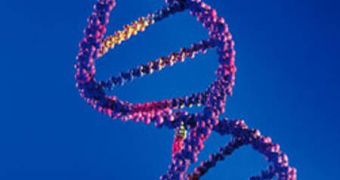Cornell University (CU) biological engineers may have just made one of the most incredible finds in the history of their field, when they have created a new method of obtaining proteins that are necessary for medicine and the industry without having to resort to living cells in the process. That is to say, they can get the same products without having to grow living cells, from which to extract the much-needed proteins. Furthermore, the new technology allows for the creation of proteins that would otherwise be impossible to manufacture with the most modern biotechnology tools.
At this moment, regular production methods imply the use of large amounts of bacterial cultures, or mammalian living cells, for obtaining such necessary drugs as insulin, used for treating diabetes and human growth hormones. However, it takes a lot of time and effort to produce these substances and there is always the risk of failure, as the cultures in which the proteins themselves grow are genetically engineered to sustain the specific thing they produce.
Still, in the case of anti-microbial proteins, it's impossible to produce them inside bacterial cultures, as the very thing they are programed to do is to destroy microorganisms. Also, some of the most important agents for regulating the life of a cell, as well as its time of death, cannot be grown inside cultures or other living cells. Too much or to few of them, and the host cell dies. It goes without saying that the entire process is painstakingly complex and that the outcome is never certain.
One of the main solutions that CU experts have found to these limitations is to simply grow the protein “outside the box.” They have mixed modified DNA strands, coded to produce a specific substance, with amino acids, the substances the proteins are made of, as well as with ribosomes, which are cell structures able to actually construct the desired product. Together with other catalysts, this procedure has proven to function very well in the test tube.
As improvements, the science team at Cornell has devised a method of weaving the coded DNA into an artificial gel. The gel itself is made entirely of modified DNA, whose strands do not connect to each other in the usual, double-helix structure. Rather, the strands stand side by side and look pretty much like crosses under the microscope. At the end of each “cross,” complementary letters ensure that the entire larger ensemble will look like a net, made up of countless tiny DNA fragments.
This mixture creates a gel of sorts, which contains all the genes required to build any specific type of proteins. Depending on the type of coding DNA that is placed in the mixture, the end result could even by anti-microbial proteins, which have thus far been a “taboo” for the industry. Details of the procedure can be found in the March 29 online edition of the journal Nature Materials.

 14 DAY TRIAL //
14 DAY TRIAL //